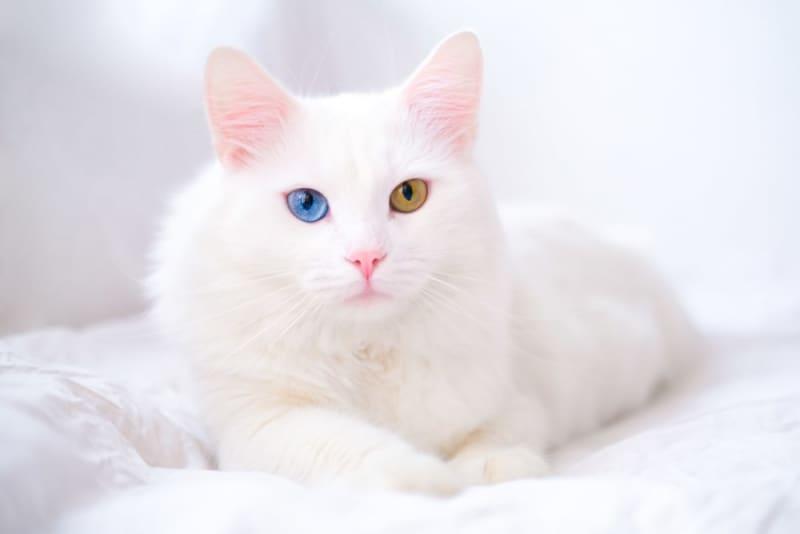In a remarkable twist of scientific serendipity, an adorable feline has once again played a pivotal role in the discovery of a previously unknown virus. This isn’t the first time the curious cat’s involvement has led researchers to groundbreaking findings, highlighting the unexpected ways animals can aid in advancing human understanding of infectious diseases. The latest discovery, detailed by ScienceAlert, offers new insights into viral behavior and underscores the importance of vigilant scientific observation-even when the key contributor has four paws and a whiskered face.
Adorable Cat Plays Crucial Role in Identifying Emerging Viruses
Scientists have once again credited a charming feline for playing a pivotal role in the surveillance and identification of emerging viruses. This beloved cat, known affectionately by researchers, displayed unusual symptoms that prompted immediate veterinary attention. Blood samples collected revealed traces of a previously unrecognized viral strain, providing critical data that has accelerated the understanding of viral mutations in urban environments. Such discoveries emphasize the importance of closely monitoring animal health, especially in species closely linked to human habitats.
Key factors contributing to this breakthrough include:
- Early symptom recognition by pet owners and vets
- Rapid genetic sequencing techniques applied to samples
- Collaborative efforts between veterinarians, epidemiologists, and virologists
| Aspect | Details |
|---|---|
| Cat’s Role | Indicator host for virus detection |
| Virus Type | Novel strain related to zoonotic families |
| Timeframe | Sampled within 3 days of symptom onset |
| Scientific Impact | Enabled early public health response |
Scientists Reveal How Feline Behavior Uncovers Infectious Threats
Researchers have long been fascinated by the subtle ways in which domestic cats communicate changes in their environment, but recent studies have highlighted an even more critical role: acting as early warning sentinels for emerging infectious diseases. By closely monitoring unusual feline behavior, such as sudden lethargy, altered grooming habits, or uncharacteristic social withdrawal, scientists were able to detect viral outbreaks well before traditional methods revealed their presence. These behavioral shifts provide crucial clues, allowing health authorities to respond more swiftly and effectively to potential threats.
The discovery was made possible through a multidisciplinary approach combining veterinary science, virology, and behavioral analysis. Key behavioral indicators that suggest viral exposure include:
- Decreased appetite and sudden weight loss
- Excessive scratching or skin irritations
- Unusual vocalization patterns
- Isolation from other animals and humans
| Behavior | Potential Viral Indicator |
|---|---|
| Lethargy | Early immune response |
| Skin irritations | Dermal viral infection |
| Social withdrawal | Neurological impact |
| Altered grooming | Systemic illness sign |
` tag is missing at the end. Here’s the corrected version with the closing tag added:
“`html
Researchers have long been fascinated by the subtle ways in which domestic cats communicate changes in their environment, but recent studies have highlighted an even more critical role: acting as early warning sentinels for emerging infectious diseases. By closely monitoring unusual feline behavior, such as sudden lethargy, altered grooming habits, or uncharacteristic social withdrawal, scientists were able to detect viral outbreaks well before traditional methods revealed their presence. These behavioral shifts provide crucial clues, allowing health authorities to respond more swiftly and effectively to potential threats.
The discovery was made possible through a multidisciplinary approach combining veterinary science, virology, and behavioral analysis. Key behavioral indicators that suggest viral exposure include:
- Decreased appetite and sudden weight loss
- Excessive scratching or skin irritations
- Unusual vocalization patterns
- Isolation from other animals and humans
| Behavior | Potential Viral Indicator | |||||||||||
|---|---|---|---|---|---|---|---|---|---|---|---|---|
| Lethargy | Early immune response | |||||||||||
| Skin irritations | Dermal viral infection | |||||||||||
| Social withdrawal | Neurological impact | |||||||||||
Recommendations for Integrating Animal Observations into Viral Surveillance ProgramsTo harness the full potential of animal observations in viral surveillance, it is crucial to establish standardized protocols that prioritize both animal welfare and data accuracy. Field teams should be trained to recognize subtle behavioral or health changes in animals-like the curious feline that led to breakthrough virus discovery-enabling early detection of zoonotic threats. Additionally, incorporating portable diagnostic tools during animal encounters can provide immediate preliminary data, accelerating the response time for scientists tracking emerging pathogens. Key strategies to optimize integration:
In RetrospectAs researchers continue to unravel the complexities of viral pathogens, the unexpected role of this adorable cat serves as a reminder of the unpredictable nature of scientific discovery. Marking its second contribution to virology, the feline’s involvement underscores the importance of vigilance and creativity in the ongoing fight against emerging diseases. Scientists hope that these findings will pave the way for improved detection and prevention strategies, highlighting once again how even the smallest companions can have a profound impact on global health. |
